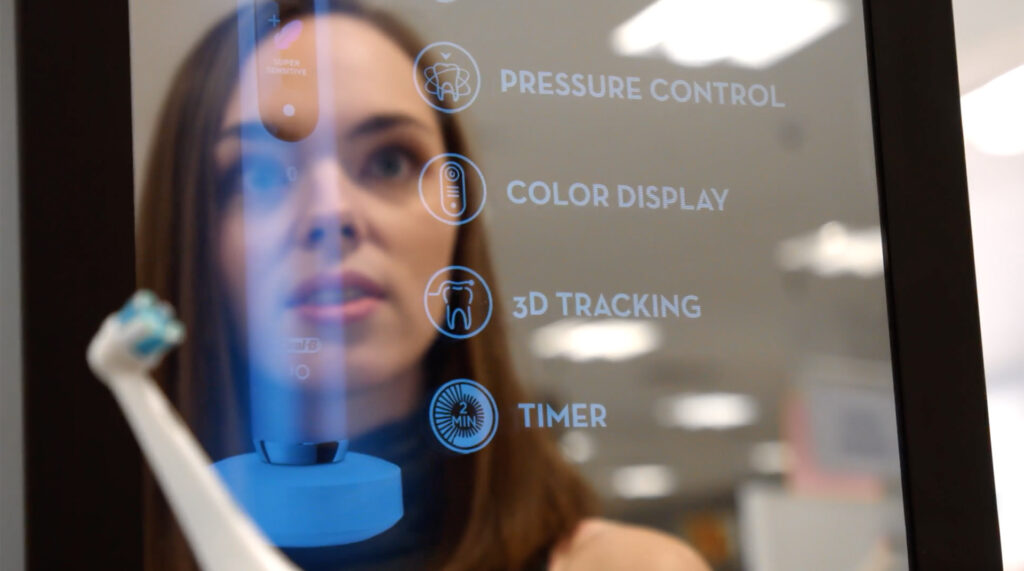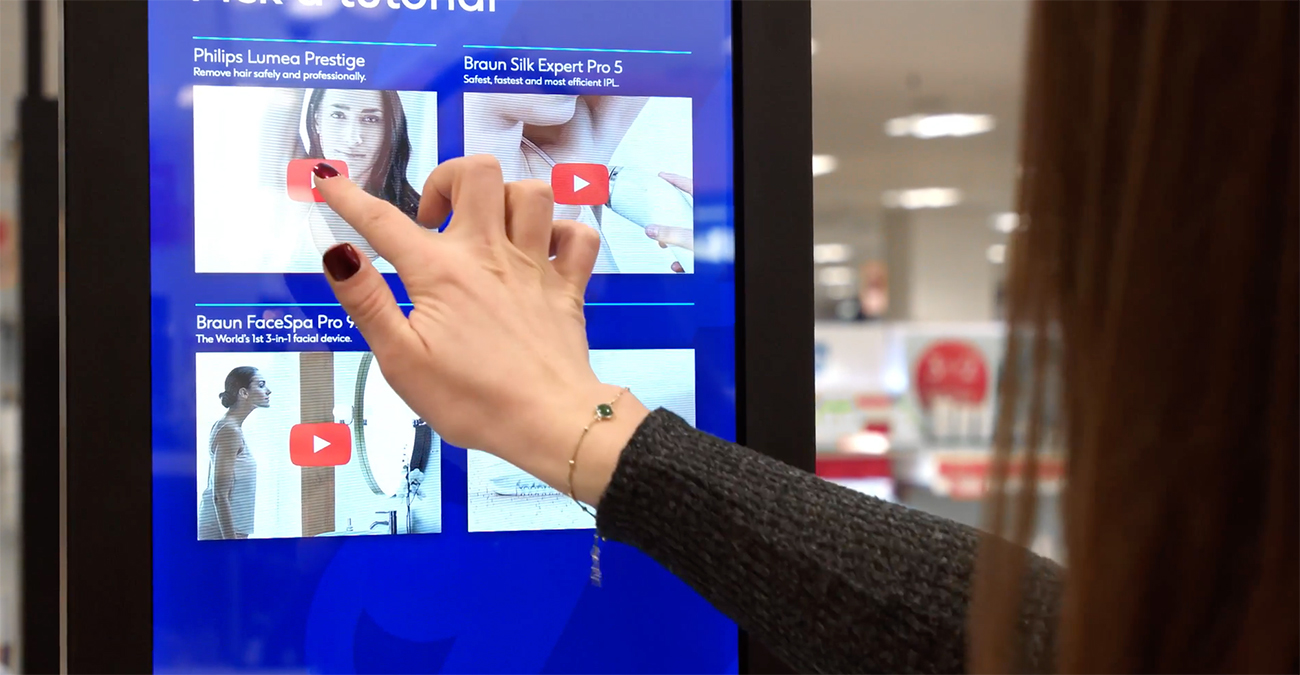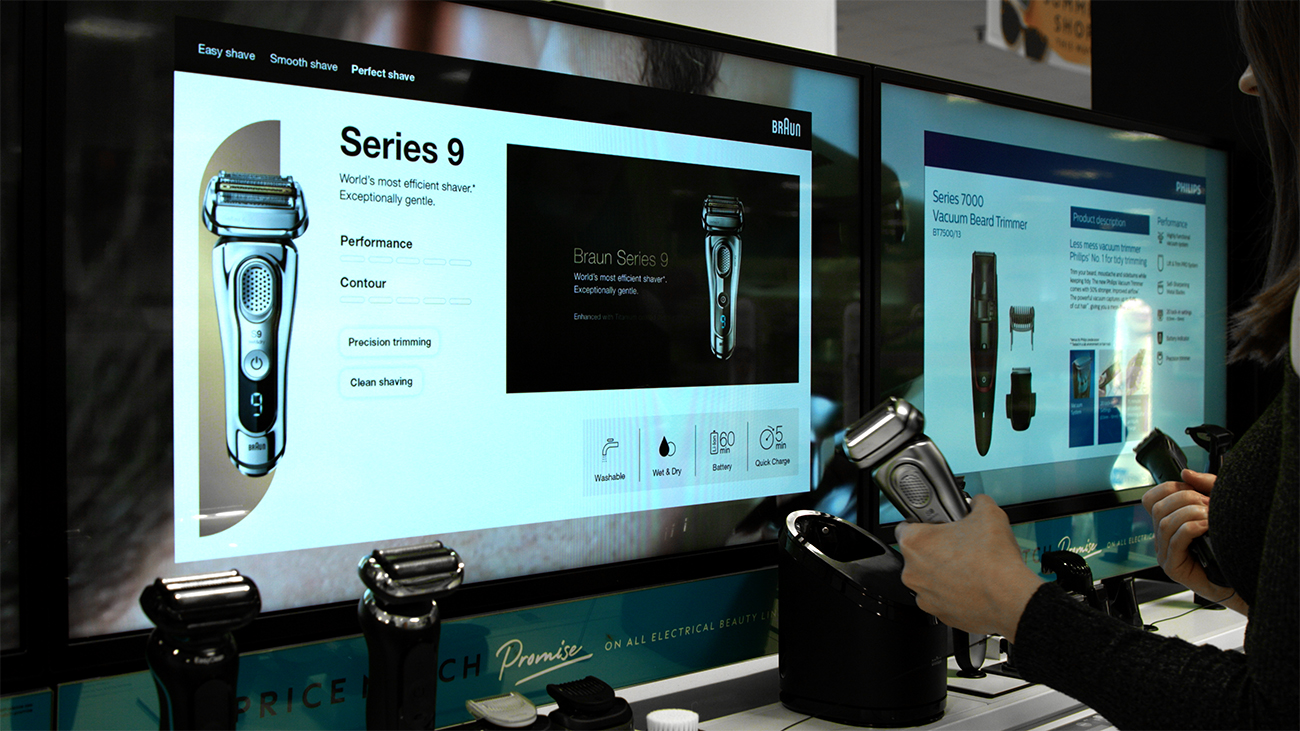retail experiences
Planning retail display for top performance

Characterising the impact that COVID-19 has had on the retail sector could involve many dimensions and factors.
Perhaps clearest of all is the gulf in fortunes between bricks and mortar ‘non-essential’ retail contrasted with the enormous shift to online.
Questions remain about whether the migration to online shopping was just accelerated by the pandemic, or whether it was a temporary phenomenon which came about because of it.
According to Walmart CEO Doug McMillion, customers “clearly want to get out and shop“.
The retail giant reported stronger like-for-like sales than expected in the February-April 2021 period reflecting, according to McMillion, “greater consumer optimism and more traffic in stores”.
But will the optimism of early 2021 continue, or will it give way to further uncertainty?
Attracting and engaging shoppers with rich in-store brand experiences
Early signs are that shoppers do indeed want to return to physical stores for the experience of ‘real world’ shopping. As surveyed by CBRE, 70% of millennials prefer shopping in stores, even though they spend an average of 7.5 hours per day online.
Yet to maintain engagement in the longer term, retailers need to offer in-store experiences that afford some of the ease and accessibility of online shopping, but which are enhanced with the immersive, multi-sensual hit of real-world interaction.

The next generation of in-store retail displays must be designed with elements of experience and performance in mind to achieve this.
Transforming the in-store retail experience: from transactional to performance
Design and planning of in-store retail displays is going to be pivotal for retailers through 2021 and beyond.
Its role is not just to complement advertising in attracting and engaging shoppers, but to entice them back to the high street with brand experiences that cannot be replaced or replicated online.
In-store shoppers are no longer interested in a ‘transactional’ experience only. Instead, they want an integrated brand experience that grabs and retains their attention and connects with them on a multi-sensory level.
For retail display design, this means transforming traditional aspects of store design into an immersive in-store retail “experiential performance” that goes beyond a sales transaction performance, creating a core reason in itself to shop in-store rather than online.
As well as having high experience expectations, consumers are also increasingly time-pushed and impatient.
The need for ‘instant’ gratification requires retailers to deliver timeless in-store retail performance that enriches experience and enhances sales.
Spectacular retail display interactions have the potential to captivate and delight shoppers, to transport them momentarily to new dimensions and provide them with sound reasons to keep them returning to store.
Planning in-store display performance for the WOW effect
Planning retail spaces for maximum impact performance as well as sales performance requires a new approach to experiential retail display design.
Let’s look at a few key factors.
Digital and Physical Display Integration
According to a survey by the International Journal of Supply Chain Management, 100% of respondents said that “experiential point of sale marketing and intimate brand experiences heighten interest in a product or service”.
Physical and digital elements such as ‘lift and learn’ product experiences benefit both shoppers and retailers. Shoppers gain product information and key features while being hands-on with the product. Integrated monitoring and reporting technology provide shopper engagement assessments for retailers and brands to continually improve the shopper experience.
As customers move through the store interacting with display features or products themselves, retail brand managers can gather data intelligence around sales potential and display performance.

Magic Mirror behaviour-based information
To complement the hands-on, lift and learn experience, magic mirror technology can provide interpretational or directional information to enhance retail display usability and create a different dynamic to just a standard screen.
Hands-on experiences can be positioned close to store entrances, allowing shoppers to get their hands on products they’re interested in within seconds, with additional screen-based interactivity drawing their attention further.

Touch screen displays
Digital displays can be used in-store to offer ‘how to’ videos, product demonstrations and product data and specifications. Also, product comparisons can be offered and stock availability checked.
The purpose of these touch screen displays is not to recreate an online experience in-store, but to enhance the purchase process and maximise in-store display performance. An interactive product demonstration solution gives shoppers an easy-to-engage with method to find the right product for them, for instance by answering a series of questions.

Hybrid retail experiences
The design of experiential displays isn’t simply about driving in-store footfall.
It’s also about offering the fullest possible experience for the customer. By using experiential display technology to showcase and sell products, in-store shoppers combine the physical experience of handling products with the interactive elements of an online purchase using tabletop embedded tablet technology.
This hybrid use of technology reduces the need to display every physical product brand type and fosters a pleasant, relaxing and rewarding shopping experience.
Using a multi-functional experience software platform, retailers can gather huge amounts of display performance data based on connecting digital screen interaction with product ‘lift and learn’ and following through to purchase.
Displayplan’s “Connie” (Connected In-store Experience) platform is specifically designed to offer this capability to retailers.
As this approach becomes more widespread the design of retail display will shift away from the simple practicality of showcasing what is available and toward a focus on interaction, immersive experience and shopper engagement. Retailers and brands can understand interactions, engagements and connections to complete in-store purchases.
Defining success
To thrive and grow, retailers must think of ways to combine digital display technology with physical in-store experiential display to engage customers.
To achieve this, a new model for retail success may be needed.
The success of individual retail stores themselves may not necessarily be defined by onsite sales performance alone, but by experiential brand engagement performance that can be tracked to sales conversion – through the channel of the shopper’s choice.
This attribution of sales performance to in-store retail display performance can only be realised through intelligent retail display content management systems.
Lights, Camera, Action – Next steps
The key to retail display performance success is to deliver complete hybrid multi-dimensional and multi-channel retail experiences that engage shoppers both in physical stores and online.
The ‘glue’ to bring these elements together will be provided by intelligent data and experience management solutions such as Connie.
Shoppers value the experience of in-person shopping with the convenience, speed and scale of online channels, but this experience must be shown to translate into sales.
Here at Displayplan we specialise in planning, creating, installing and managing experiential retail displays to drive top performance…saving you the drama!
Contact our retail display specialists today on 01462 88 6000 or email info@displayplan.com. Together we can create a showstopper.
